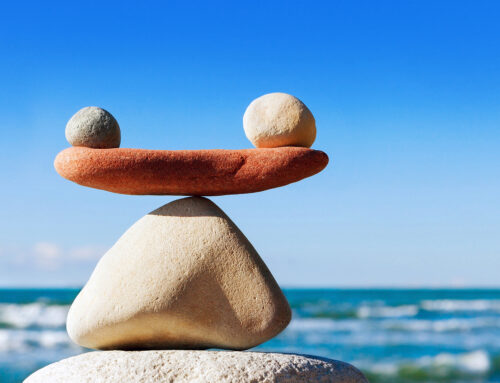Why millions of Western adults are getting present putting color to paper
Last year, three of the top-selling books on Amazon were of a totally new genre: coloring books for adults. In fact, a staggering 12 million adult coloring books were sold in 2015 alone, making what was once an activity beloved mainly by children a pastime now coveted by millions of adults. The question, though, is why? Why were (and still are) so many adults buying these books? What makes adult coloring books different from what you and I drew and colored in as kids? And, most importantly, how can you really benefit from them? If so many people love them, there must be a reason why, right?
What are adult coloring books?
Adult coloring books are much like the coloring books you remember from your childhood, except they tend to be more detailed. The illustrators often give extra attention to design and beauty. And, instead of characters from kids’ movies, you can find designs that appeal more to adults—from mandala coloring books to themed coloring books, such as Dr. Who, Secret Gardens and Grimm Fairy Tales. You can even find entire coloring books on the best-seller list devoted to the art of the swear word.
Why are adult coloring books so popular?
These days, we are under a lot of stress. There are so many demands for our time and attention, and it’s hard to make time for things just because they are fun or relaxing. Coloring, however, is a great way to de-stress. It’s portable, inexpensive, can be done on your own time and it appeals to a wide variety of people. It also helps many people connect to memories of a simpler time—to their inner child. Coloring invites a sense of playfulness and flow, all of which can be deeply satisfying and inspiring.
I also think that people are looking for ways to unplug from their screens and engage in the real, tangible world once in a while. The rise of the DIY and Maker movements is evidence that there is still value in taking the time to create things by hand. And, mindful coloring is an easy, entry-level craft that you don’t need to learn anything complicated to start practicing. All you need is a coloring book; colored pens, pencils or crayons; and to give yourself the gift of time and space to do it.
What is mindfulness meditation?
Mindfulness meditation is the practice of paying attention to the present moment with nonjudgmental awareness, which is almost always easier said than done—but it can be done. It involves focusing your attention on the present moment, noticing when you get distracted by thoughts, and then refocusing your attention back on the present moment, again and again.
Why is mindfulness meditation so popular?
A quick online search can point you toward research articles connecting the practice to better health, reduced stress, increased productivity and better immune system functioning. Mindfulness has been shown to activate the neuroplasticity of the brain—the brain’s ability to create new pathways and restructure itself—and becoming mindfully responsive rather than reactionary becomes the brain’s default in people who engage in a mindfulness practice regularly.
Mindfulness meditation’s impact on stress is so powerful that it’s been shown to increased telomere length. Why does this matter to you? This is a measure of biological aging (as opposed to chronological aging). Telomeres are the little tiny protective caps on the end of our DNA chains. Over time, these can become frayed and damaged. Since our cells replicate all the time, and they rely on the DNA blueprint to guide the process, damaged telomeres can prevent cells from doing their job correctly. Essentially, if mindfulness could be bottled up in pill form, it would be flying off the shelves. But, the only way to benefit from mindfulness meditation is to engage in the practice on a regular basis. The good news is that it is mindfulness meditation is simple to learn, doesn’t have to cost a thing and the benefits can be enjoyed quickly. The benefits can be felt in as little as 5 or 10 minutes per day. If you want to learn how to practice, download my free introduction to mindfulness meditation toolkit, try an app like Headspace or find a meditation class in your area.
The connection between coloring and mindfulness meditation
Before we talk about mindful coloring, it might be helpful to describe mindless coloring. This is the kind of coloring we do while we are on the phone, in a meeting or while engaged in other tasks. While our hands are moving, coloring in or doodling on a page, our minds are planning, analyzing or consumed with the scripts our brains default to when we are doing other things.
These scripts are the very thing we practice disengaging from when we increase our awareness and focus on the present through the practice of mindfulness meditation. Rather than fall into looping, engrained scripts when attention drifts, mindfulness meditation helps us notice our thoughts, let them go and then come back to the present moment.
Mindful coloring, then, is a practice of aligning your attention with the act of coloring—taking it one moment, one decision at a time. When practicing, take the time to notice the rainbow of colors and thoughtfully decide which pencil to pick up next. Explore how it feels to drag your tool across the paper. Notice how you feel when you step back and look at a completed section.
Also notice the tone of your internal narrator when observing your experience. For many of us, the ability to enjoy coloring as a pastime was lost track of at an early age, and coloring can invite the self-critic to come in and roost. Instead of approaching a blank piece of paper with a sense of curiosity and excitement, it is felt as a threat—we tense up in anticipation of the flogging our self-critic is preparing to hit us with.
It doesn’t need to be that way, though. Mindful coloring is a completely solo practice. You are the only witness to what you create, so any judgment that arises is solely your own. Mindful coloring, at its very core, is practicing nonjudgmental awareness of putting color to paper in the present moment. The self-critic has no place here.
Mindful coloring has become a foundational “windshield wiper” practice for me. I use this term to describe any of the informal mindfulness practices that I use to ground myself during the course of my day. Like other windshield wiper practices, mindful coloring helps me clean up mental clutter, reset my attitude and connect to the present moment. Mindful coloring also helps me tap into a sense of curiosity and joy, which can come in short supply at times—I’m looking at YOU 2016! Here’s to a more joyful, present 2017 for us all. Happy Coloring!
Samara V. Serotkin, Psy.D. is a Seattle-based clinical psychologist and mindfulness-based coach. Dr.  Serotkin, the author of “The Relationship Between Self-Actualization and Creativity,” has served as an advisor to multiple startup companies and presented at national conferences on topics ranging from mindfulness meditation to creating behavioral change.
Serotkin, the author of “The Relationship Between Self-Actualization and Creativity,” has served as an advisor to multiple startup companies and presented at national conferences on topics ranging from mindfulness meditation to creating behavioral change.






